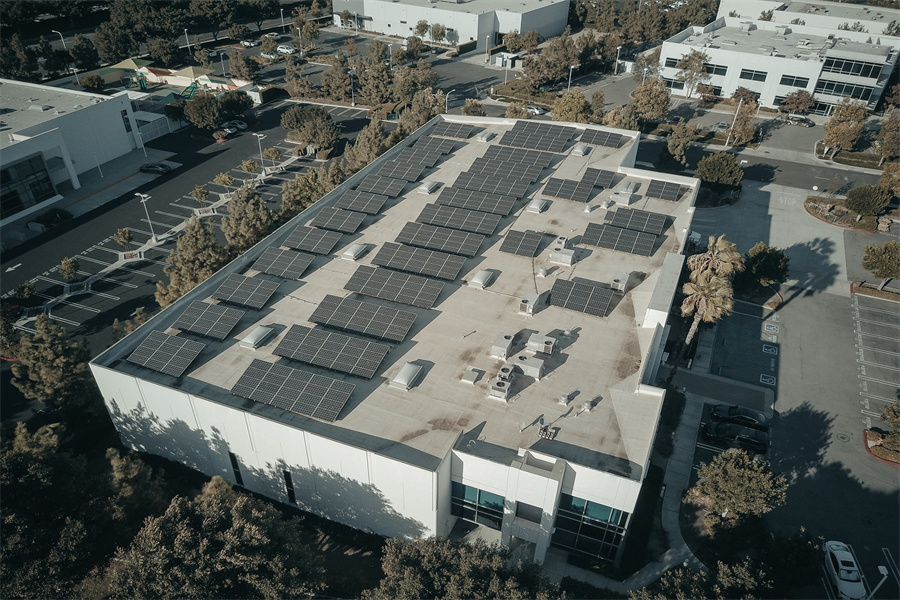Tesla Can Be Charged With Solar Power
time:2023-07-20 08:41:18 Views:0 author:Jinan Freakin Power Ltd.
Tesla has just updated a major function overseas:
Use solar energy to charge your vehicle.
Electrek, an American new energy vehicle media, reported that Tesla has officially launched this service in the United States and Canada.
Tesla owners can use the excess solar energy generated by the solar system to charge their Tesla vehicles simply by setting up in the Tesla app.
Musk, who has always referred to solar energy as the clean energy of the future, finally took action this time, converting solar energy into kinetic energy.
However, there is a condition for using this function, that is, a Tesla Powerwall must be installed at home.
01 Charge On Solar
As we all know, renewable energy such as solar energy, wind energy and water energy are developing rapidly, and even begin to generate excess energy, so how to use these energy sources?
Tesla offers a solution, which is to use Powerwall to allow Tesla owners to charge their cars with excess solar energy, namely "Charge On Solar".
In March of this year, Tesla’s APP mentioned this feature for the first time in an update, but it was also called “Drive on Sunshine” in the version at that time – “driving in the sun”, which sounds quite poetic. For Tesla owners with a Powerwall, the feature will use the excess solar energy they generate to charge their vehicles.
Tesla has now officially rolled out the feature in the U.S. and Canada, and it's available to anyone with a Powerwall and a Tesla vehicle.
Even so, there are still many limitations. First of all, this function is only applicable to Tesla Powerwall, and users who use third-party solar energy storage are currently unable to use it.
In addition, if Tesla owners want to experience this new feature, they also need to meet the following hardware and software conditions:
First of all, of course, you must own a Tesla and upgrade the car-machine system to version 2023.26 and later. Tesla Powerwall needs to be upgraded to version 23.12.10 and later, and the Tesla APP needs to be upgraded to version 4.22.5 to coordinate the work of the two.
After the upgrade is complete, the car owner can open the Tesla APP, click to enable the "Charge On Solar" function, and set the charge limit and preferred charge location according to their own needs.
When switching to solar charging, the vehicle will monitor the charging situation in real time and adjust the charging power every 10 seconds as needed, and users can also schedule when to use solar charging.
In addition, Tesla also mentioned some charging restrictions:
If the vehicle's current charge is below the mark on the sun slider, the vehicle will be charged using solar power and the grid.
However, when the vehicle's charge exceeds the sun slider mark, the vehicle will automatically switch to charging with only excess solar energy until the owner's charge limit is reached.
And solar and household loads are variable, so if you want to charge faster, just increase the lower charge limit to the desired range.
It is worth mentioning that this function can also be actively scheduled. If the user knows that energy consumption will increase at a specific time when using it, the function can stop solar charging after this time. Through Charge On Solar, the electricity bill of car owners can be significantly reduced.
02 Large charging treasure——Powerwall
Powerwall is Tesla’s energy system that Musk values very much. It carries Tesla’s vision of a “decentralized global power company”. Musk once said that Tesla’s energy production and storage sector may develop better than the automotive business in the future.
In 2015, Tesla released the first-generation Powerwall, a home energy storage battery.
The Powerwall is charged with electricity generated by solar panels, or through the public grid during low electricity price periods, and then powers the home during peak electricity consumption in the evening. When the public grid is out of power, it can continue to supply power as a backup power supply. Powerwall can operate independently without relying on the public grid, providing power security for ordinary households in emergency situations.
Therefore, Powerwall is more like a large "power bank". The first-generation Powerwall has a capacity of only 6.4kWh. After a lapse of one year, the storage capacity of the second-generation Powerwall has increased to 13.5kWh, and a battery inverter is integrated.
In 2021, Powerwall+ (plus) will be released with a capacity of 13.5kWh. Powerwall+ integrates energy storage batteries, battery inverters and photovoltaic inverters. It is a DC-coupled household storage product and is more suitable for families with new solar systems.
The operation process of Powerwall can be divided into three modes.
The first is the Self-powered mode, that is, the self-use mode of solar energy, that is to say, the excess photovoltaic power generation is stored during the day and used at night, which can save electricity bills.
The second is the Backup mode, that is, the backup power mode, which is mainly to provide backup power for the family during a power outage.
The third is the Time-based mode, that is, the time-of-use electricity price mode. Powerwall can negotiate a time-of-use electricity price with the power company, and can discharge it to households during peak electricity bills.
Users can use the Tesla APP to set these three operating modes to adjust the SOC level of battery operation.
At the end of last year, Tesla launched the "Tesla Electric" function, which makes Powerwall equivalent to a small power station. When the public grid is in short supply, it can transmit electricity to make money.
According to foreign media reports, through the Tesla Electric function, some users earn as much as $150 a day. This brand new business model has officially challenged traditional grid companies and power generation companies.
So in a sense, Tesla is also an energy retailer.
As for the price, in March this year, Tesla announced that users in the US market can purchase Powerwall alone, starting at $9,200, including $8,000 for Powerwall, $1,000 for Gateway Wifi equipment, and $200 for accessories.
But Tesla will give priority to orders for complete solar systems. In addition, users do not need to purchase Powerwall Direct service from Tesla, but can purchase it from Tesla authorized installers, the price is between US$15,000 and US$18,000, and they can also apply for a 30% federal solar tax credit during the purchase process.
Customers who install and register a Powerwall between June 15, 2023 and October 31, 2023 will receive a $500 rebate per Powerwall. To date, Tesla has installed more than 500,000 Powerwalls.
03 Currently not available in China
So far, although Tesla China's official website has provided an introduction about Powerwall, it cannot directly place an order, nor has it opened a special purchase store.
Although individuals and families cannot purchase it, there are already Tesla supercharger stations connected to Powerwall in China. For example, the Tesla V3 charging station in Lhasa converts sunlight into electrical energy, stores energy through Powerwall energy storage equipment, and can self-generate 200 degrees per day, using the stored energy to charge vehicles, effectively improving energy efficiency.
In April of this year, it was reported that Tesla was preparing to launch its third-generation home battery pack Powerwall 3. While Powerwall is being updated, household energy storage is also ushering in large-scale growth. According to EVTank data, the newly installed capacity of global household energy storage will reach 15.6GWh in 2022, a year-on-year increase of 136.4%.
Among them, Europe is the absolute home of the household storage market. According to the data of the European Photovoltaic Association, in 2022, the growth rate of European household storage will be 71%, with a new installed capacity of 3.9GWh and a cumulative installed capacity of 9.3GWh. Germany, Italy, the United Kingdom, and Austria are the top four markets.
Compared with the hot development of household energy storage in Europe and the United States, my country's energy storage market is still dominated by enterprises. As of the third quarter of 2022, the cumulative installed capacity of energy storage in my country was 50.3GW, an increase of 36% year-on-year. In comparison, the household energy storage industry is still in its infancy.
However, after being affected by power outages and tiered electricity prices, home energy storage has received attention. At the recent International Digital Energy Exhibition, many household energy storage companies emerged. For the domestic market, distributed photovoltaics and photovoltaic energy storage systems have also begun to explode.
And Tesla’s second energy storage factory in Shanghai is about to start construction. This factory mainly plans to produce Tesla’s ultra-large commercial energy storage battery (Megapack). Unlike Powerwall, which is oriented to individual home users, Megapack is mainly oriented to enterprises.
Now that Megapack is here, will Powerwall be far behind?





